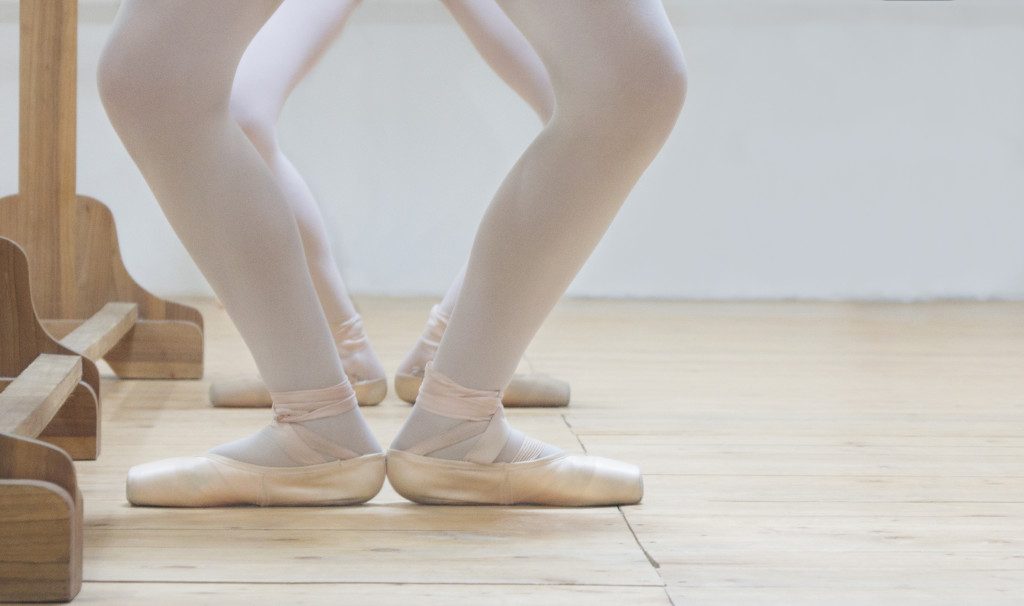I have to admit, I am always one of the people who raise their hands when the question is asked: “Who here has an anxiety when it comes to Maths?” I still vividly remember receiving results from a maths test in primary 7 and thinking that this was it – me and maths weren’t compatible. To be honest with myself I know I’m not hopeless at maths. I understand basic concepts and I am able to apply them – it is problem solving that stumps me. So why do I then look back on my entire school experience of maths as terrible, frightening and impossible?
Because like most other human beings I dwell on the things I can’t do, rather than take time to think about all the things I can. This is why I am most looking forward to rediscovering my misconceptions and anxieties of maths throughout this module. I have already started to consider maths in contexts outside of school, such as where maths fits into my daily life.
A good example is at dancing. Growing up, I went to dancing to switch off from school, but since starting this module I now realise how the dancing I did linked so closely with mathematical concepts I had learned.
Shape
Shape refers to various features in dance. It can refer to the shape of the room or stage you are dancing on. It may also refer to your movements. Usually my dance teachers would try to compare movements to shapes in order to help us picture how our movements should look to the audience. A good example of this is a ‘plie’ in ballet. My dance teacher would always tell us to imagine we were making diamond shape with our legs.

Photo Credit: Kryssia Campos | Getty Images (cited in The Rockettes, 2017)
Shape is also significant in a group dance. Usually the choreographer needs to consider positioning so that everyone can be seen from the audience and to make the dance look more attractive.
Space
“Spatial awareness is an organised knowledge of objects including oneself, in a given space. Spatial awareness also involves understanding the relationships of these objects when there is a change of position. Obviously this is complex mental skill, one that children must hone from a young age.” (Morrisey, 2016)
As a dancer, you must make good use of the space around you. I remember as a young dancer my teacher would make me put my arms out to the side to make a T shape with my body and spin around in circles to make sure I couldn’t touch anyone. Of course, by the time I was older they expected me to have a bit more spatial awareness but this is a concept which was developed from a very early age. Spatial awareness in dancing refers to being aware of the dancers around you and also the size and shape of the room to ensure you are making appropriate use of the space you have.
Time
Timing is an extremely important aspect of dancing as you must be able to count beats and recognise rhythms. Most specifically the examinations in the classical styles of dancing, including tap, jazz and ballet, include timing as one of the specific criteria. This is a table taken from the Royal Academy of Dance specifications for Grade 1, which shows that even from the earliest of grades they expect pupils to understand the concept of sequences and timing (sequencing being another important mathematical concept.)

(Royal Academy of Dance: Specification, 2017)
Terminology & Sequences
Even the terminology used in dance and maths is linked. For example, in ballet there are terms used to describe which position you should be in which include ‘first position’, ‘second position’ and ‘third position’. This uses the basic concepts of number sequences and counting which is one of the first mathematical concepts you are introduced to in school.
These are all concepts that I knew were important in maths and dancing separately, but it has taken me until now to realise how closely they link together. Obviously there are many more concepts I haven’t even touched on, like position and movement, but that shows how many mathematical concepts there are and how relevant they are in day-to-day life. I think this will be a post that as I go through the module I can reflect back on and probably make even more links between maths and my everyday life. I think looking at sports in particular is a great way to make links with mathematical concepts you have learned and you’ll be surprised at how many you can relate to!
References
How to Do the 5 Basic Positions | Ballet Dance. (2011). (Video) YouTube: HowcastArtsRec.
Morrisey, B. (2016). Spatial Awareness in Young Children. [online] Kidsdevelopment.co.uk. Available at: http://www.kidsdevelopment.co.uk/spatialawarenessyoungchildren.html [Accessed 14 Sep. 2017]
Royal Academy of Dance: Specification (2017). [ebook] London: Royal Academy of Dance Enterprises Ltd, p.7. Available at: https://www.rad.org.uk/achieve/exams/what-we-do/rules-regulations-and-specifications [Accessed 14 Sep. 2017].
The Rockettes. (2017). Ballet 101: How to Do a Plié. [online] Available at: https://www.rockettes.com/blog/ballet-101-how-to-do-a-plie/ [Accessed 14 Sep. 2017].

